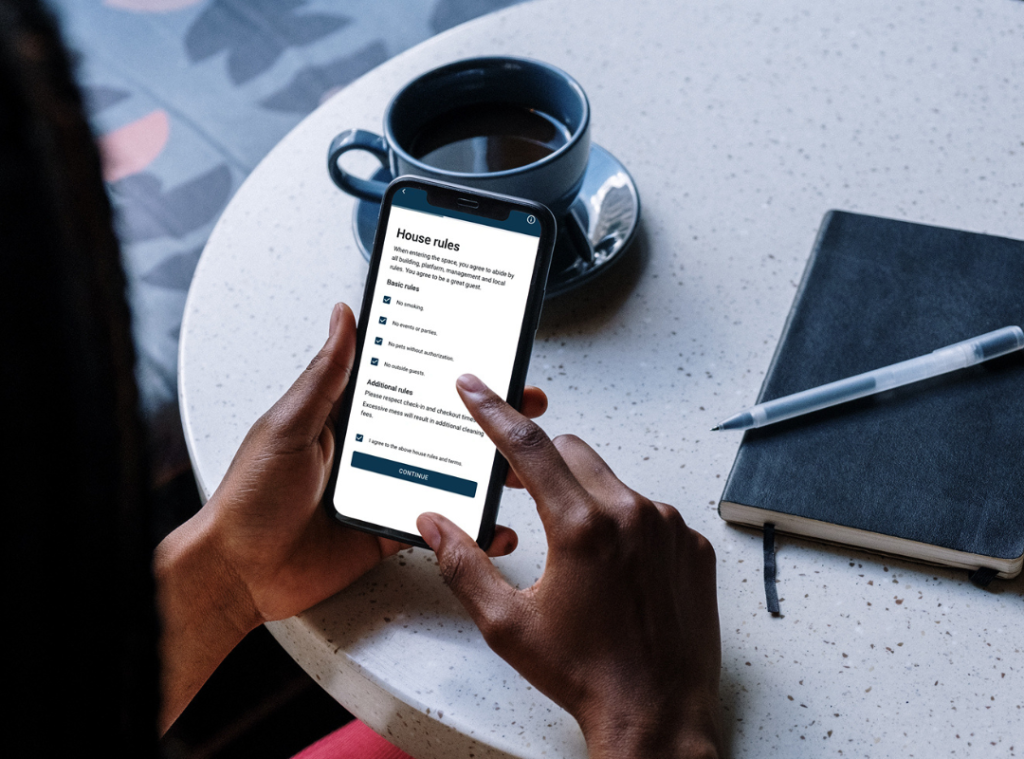Valuing a short-term rental property isn’t just about numbers; it’s about understanding the unique dynamics that make these properties profitable. Accurate appraisals are essential for setting competitive rates, attracting the right guests, and ensuring long-term success.
Let’s break down everything you need to know to master short-term rental appraisals, making the process clear and manageable.
Understanding Short-Term Rental Appraisal
First things first: what exactly is a short-term rental appraisal? Simply put, it’s an assessment of a property’s market value based on various factors unique to short-term rentals. Unlike traditional property appraisals, which often focus on long-term market stability, short-term rental appraisals consider the fluctuating nature of guest stays and seasonal demand.
The goal of a short-term rental appraisal is to provide an accurate picture of how much a property is worth in the current market. This helps property owners set rental rates that are competitive yet profitable, and it also plays a critical role when buying, selling, or refinancing a property. Whether you’re a seasoned investor or a new property owner, understanding the intricacies of short-term rental appraisals can make a significant difference in your bottom line.
Factors Influencing Short-Term Rental Valuation
Several key factors come into play when valuing a short-term rental property. Knowing these can help you better understand how an appraiser determines a property’s worth and what you can do to maximize your property’s value.
Location:
The adage “location, location, location” holds especially true for short-term rentals. Properties close to popular attractions, restaurants, and amenities typically fetch higher rental rates. Additionally, the overall safety and desirability of the neighborhood can significantly impact your property’s valuation. Areas with good public transport, low crime rates, and scenic views often command higher prices.
Property Condition:
The condition of your property is another crucial factor. Well-maintained properties with modern amenities and recent upgrades usually appraise higher. Regular upkeep and periodic renovations not only keep your property appealing to guests but also enhance its market value. Think about it: would you rather stay in a freshly painted, stylish apartment or one that’s showing signs of wear and tear?
Market Trends:
The short-term rental market can be quite volatile, with demand fluctuations based on seasons, economic factors, and travel trends. Understanding these trends is key to accurate valuations. For instance, a beachfront property may see higher demand in the summer months, while a ski lodge would peak during winter. Keeping an eye on local events, tourism data, and broader economic indicators can help you anticipate these changes and adjust your valuations accordingly.
Comparable Properties (Comps):
One of the most effective ways to gauge your property’s value is by looking at comparable properties in the area. Known as “comps,” these are similar properties that have recently sold or are currently listed on the market. Analyzing comps helps you understand the going rates for properties like yours, but it’s important to select comps that are truly comparable—consider factors like size, condition, and location. Using a mix of current listings and recent sales will give you a well-rounded view of the market.
Income Potential:
Unlike traditional properties, short-term rentals are often valued based on their income potential. This means considering both historical and projected rental income. Factors such as occupancy rates, average daily rates (ADR), and overall revenue play a crucial role. High occupancy rates and strong ADRs indicate a desirable property that can command higher valuations. Regularly tracking these metrics and making adjustments to improve them can boost your property’s value over time.

Steps to Conduct an Accurate Appraisal
Now that you know what factors influence the valuation of a short-term rental property, let’s dive into the steps you can take to conduct an accurate appraisal. This process involves gathering information, analyzing data, and combining different valuation approaches to come up with a reliable figure.
Gathering Information
The first step in the appraisal process is gathering all relevant information about the property. Start with the basics: the property’s size, number of bedrooms and bathrooms, amenities, and any unique features that might set it apart from others. This includes both the interior and exterior conditions. Make sure you have up-to-date documentation, including recent maintenance records and any permits for renovations or additions.
Understanding local zoning laws and regulations is also crucial. Zoning laws can affect your property’s usage and its appeal to potential renters. For instance, some areas might have restrictions on short-term rentals, while others may require special permits. Being aware of these regulations can help you avoid any legal issues and ensure your property remains compliant.
Analyzing Market Data
Once you have all the property details, it’s time to analyze market data. This involves researching local market trends and statistics to understand the broader context in which your property operates. Look at data on occupancy rates, average daily rates (ADR), and overall demand in your area. This can give you a sense of what similar properties are charging and how often they are booked.
Using online tools and databases can make this process easier. Websites like AirDNA, Zillow, and even local government resources provide valuable data that can help you assess market trends. Look at historical data to identify patterns and predict future demand. For example, if you notice a steady increase in tourism in your area, this could indicate a growing market that might drive up property values.
Evaluating Property Condition
After analyzing the market, it’s time to take a closer look at the property itself. Conduct a thorough inspection to document its current condition. Pay attention to both the big-ticket items, like the roof and HVAC system, and the smaller details, like fixtures and finishes. A well-maintained property not only attracts more guests but also justifies a higher valuation.
During the inspection, make note of any recent upgrades or renovations. Modern amenities, updated kitchens and bathrooms, and new flooring can significantly boost your property’s appeal and value. On the flip side, any signs of neglect or necessary repairs should be addressed promptly. Investing in maintenance and improvements can pay off in higher rental income and a better appraisal.
Comparative Market Analysis (CMA)
With your property details and market data in hand, you can now perform a Comparative Market Analysis (CMA). This involves selecting similar properties (comps) that have recently sold or are currently listed in your area. The goal is to compare your property to these comps to determine its market value.
When choosing comps, look for properties that are as similar as possible to yours in terms of size, condition, location, and amenities. Adjust for any differences by adding or subtracting value based on how your property compares. For example, if your property has an extra bedroom or a better view, these features should be factored into the valuation.
Income Approach
Another key method for valuing a short-term rental property is the income approach. This involves calculating the potential rental income the property can generate. Start by looking at your property’s historical income data, including occupancy rates and ADR. Use this information to project future income based on market trends and seasonal demand.
To get a more accurate picture, consider your operating expenses as well. This includes costs like property management fees, maintenance, utilities, and insurance. Subtract these expenses from your projected income to determine the property’s net operating income (NOI). The NOI gives you a clearer sense of the property’s profitability and can be used to estimate its value.
Final Valuation
Combining all the data and methods mentioned, you can arrive at a final valuation for your property. This is where you review and double-check your calculations to ensure everything adds up. Look for any discrepancies or areas where you might need more information. It’s always a good idea to get a second opinion, whether from a professional appraiser or a trusted real estate expert, to confirm your findings.
Tools and Techniques for Accurate Appraisals
To make the appraisal process smoother and more accurate, it’s essential to leverage the right tools and techniques. These resources can help you gather data, analyze trends, and ultimately determine a more precise valuation for your short-term rental property.
Online Platforms
There are several online platforms designed to help property owners and appraisers collect and analyze market data. Websites like AirDNA provide comprehensive data on occupancy rates, average daily rates, and market trends for short-term rentals. Zillow and Redfin are great for finding comparable property listings and sales data. Using these tools can save you time and give you access to up-to-date information, which is crucial for accurate appraisals.
Professional Appraisal Services
Sometimes, it makes sense to hire a professional appraiser, especially if you’re dealing with a high-value property or complex market conditions. Professional appraisers bring expertise and objectivity to the process, ensuring that all factors are considered. They can provide detailed reports that are useful for refinancing, selling, or just getting a clear picture of your property’s value.
Common Challenges in Short-Term Rental Appraisal
Appraising short-term rental properties comes with its own set of challenges. Being aware of these can help you navigate the process more effectively and avoid common pitfalls.
Market Volatility
The short-term rental market can be quite volatile, with demand and pricing fluctuating based on seasons, economic conditions, and travel trends. Keeping up with these changes requires constant monitoring and flexibility. It’s essential to stay informed about local events, economic indicators, and broader tourism trends to anticipate shifts in demand.
Data Accuracy
Accurate and reliable data is the backbone of any good appraisal. However, data can sometimes be outdated, incomplete, or misleading. Always verify the sources of your data and cross-check with multiple platforms to ensure accuracy. Regularly updating your data helps maintain the reliability of your valuations.
Regulatory Changes
Local regulations can have a significant impact on short-term rental properties. Changes in zoning laws, permit requirements, or rental restrictions can affect your property’s value and its potential income. Stay informed about any regulatory changes in your area and adjust your appraisals accordingly to remain compliant and competitive.

Tips for Improving Appraisal Accuracy
To enhance the accuracy of your appraisals, consider implementing these practical tips:
Regular Market Analysis
Stay updated with the latest market trends by conducting regular analyses. This means keeping an eye on occupancy rates, average daily rates, and broader economic indicators. Regularly reviewing this data allows you to make timely adjustments and stay ahead of market changes.
Maintaining Property Condition
Consistently maintaining and upgrading your property can significantly boost its value. Regular maintenance, along with periodic renovations, keeps your property appealing and competitive. Investing in quality amenities and modern features can attract more guests and justify higher rental rates.
Using Technology
Leverage technology to streamline your appraisal process. Use online platforms to gather and analyze data, and consider property management software to track income and expenses. Technology can help you stay organized, make data-driven decisions, and enhance the accuracy of your valuations.
Consulting Experts
Don’t hesitate to seek advice from real estate professionals and appraisers. Their expertise can provide valuable insights and help you navigate complex appraisal scenarios. Whether you’re a seasoned property owner or new to the market, consulting experts ensure you’re making informed decisions.































